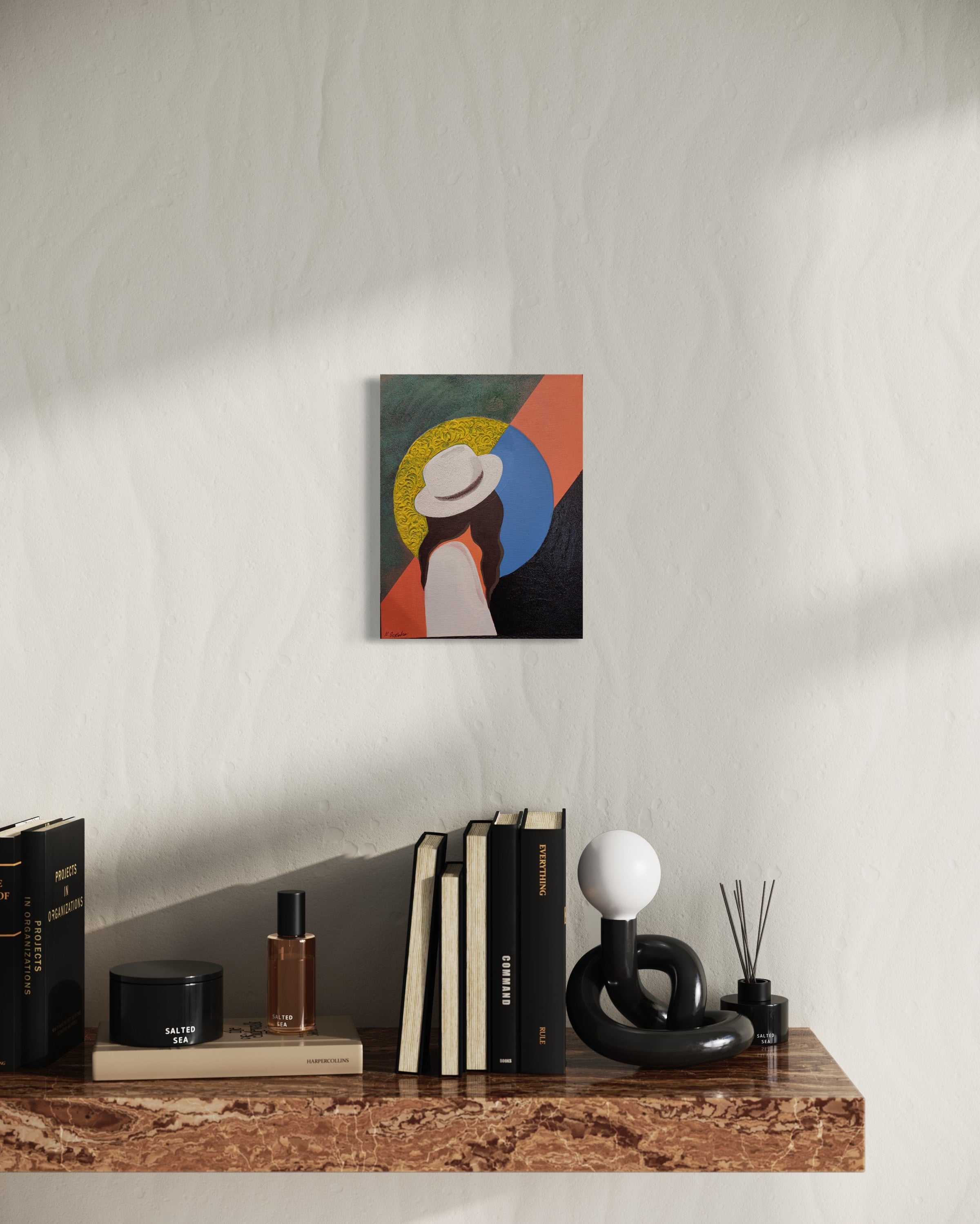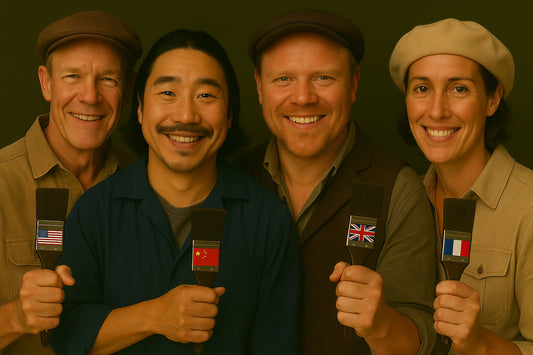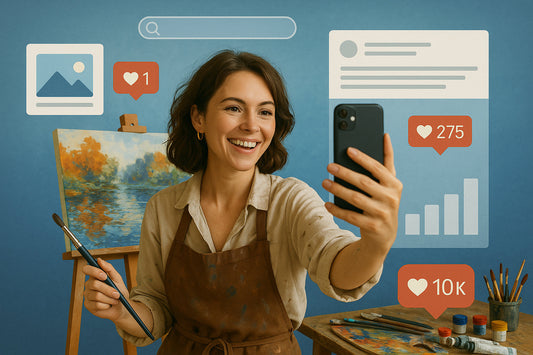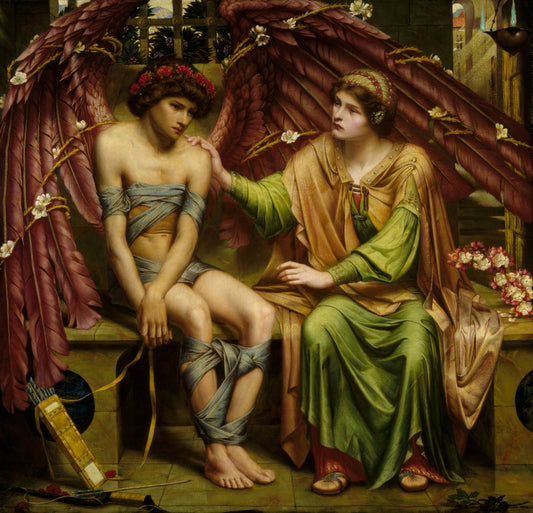In the dynamic and ever-evolving art world of 2025, fine arts artists face both unprecedented opportunities and challenges in establishing their personal brand and promoting their work. The digital landscape has become a critical arena for artists to connect with audiences, showcase their creativity, and build sustainable careers. With the rise of social media platforms, digital art marketplaces, and innovative technologies like blockchain, augmented reality (AR), and virtual reality (VR), artists now have access to tools that can amplify their reach and impact like never before.
However, the digital space is also highly competitive, requiring artists to adopt strategic approaches to stand out and resonate with their target audiences. Building a personal brand is no longer just about creating exceptional art; it’s about crafting a compelling narrative, leveraging the right platforms, and engaging authentically with collectors, fans, and collaborators. According to Art Marketing News, a strong online presence combined with direct buyer interaction is essential for success in today’s art market.
This report explores the top strategies for fine arts artists to develop and promote their personal brand in the digital age. From defining a unique artistic identity to utilizing cutting-edge digital marketing tools, the insights provided here are drawn from industry experts and leading resources. These strategies are designed to help artists navigate the crowded digital space, connect meaningfully with their audience, and achieve long-term success.
As highlighted by B2B Daily, authenticity, personalization, and community-building are key pillars of effective digital marketing for artists. Additionally, platforms like Instagram, TikTok, and YouTube have become indispensable for sharing stories and engaging with niche communities, as noted by IPS News. This report will delve into actionable steps that fine arts artists can take to harness these tools and trends.
By understanding and implementing these strategies, artists can enhance their visibility and create a lasting impression in the digital art world. Whether you are an emerging artist or an established creator looking to expand your reach, this guide will provide the insights and techniques needed to thrive in the modern art landscape.
Defining Your Unique Artist Identity and Brand
Understanding the Core of Your Artistic Identity
Delving into the foundational elements that define your creative persona is crucial to establishing a unique artist identity. This involves reflecting deeply on your artistic motivations, inspirations, and the messages you aim to convey through your work. Unlike existing content broadly discussing the importance of artist identity, this section focuses on actionable steps to uncover and articulate your personal creative essence.
- Artistic Influences and Inspirations
Identify the cultural, historical, or personal influences that shape your work. For example, if your art is inspired by surrealism, explore how to reinterpret this style to reflect your unique perspective. Document these influences in your portfolio or artist statement to provide context for your audience.
- Defining Your Mission and Vision
Craft a mission statement that encapsulates your purpose as an artist. For instance, if your goal is to advocate for environmental sustainability through art, ensure this is consistently reflected in your messaging, materials, and themes. A clear mission helps you connect with audiences who share similar values.
- Exploring Recurring Themes and Motifs
Analyze your work to identify recurring themes, symbols, or subjects. These elements often serve as the backbone of your artistic identity. For example, if your art frequently explores themes of identity and belonging, emphasize this in your branding to attract an audience that resonates with these ideas.
Crafting a Distinct Visual Identity
A strong visual identity is essential for making your brand recognizable and memorable. While previous content has touched on the importance of consistency, this section delves into specific strategies for developing cohesive visual elements that align with your artistic identity.
- Logo and Branding Elements
Design a simple yet impactful logo that reflects your artistic style. For instance, if you specialize in abstract art, your logo could incorporate geometric shapes or bold colours. Pair this with a consistent colour palette and typography across your website, social media, and promotional materials.
- Signature Style in Artwork Presentation
Develop a consistent method for presenting your work online and in person. This could include using specific framing techniques, watermarking your digital images, or curating your portfolio to highlight your artistic evolution. Consistency in presentation reinforces your brand identity.
- Visual Storytelling Across Platforms
Use platforms like Instagram and TikTok to create a cohesive visual narrative. For example, you can share behind-the-scenes videos of your creative process, time-lapse recordings of your work, or themed collections that showcase your art in a storytelling format.
Building an Emotional Connection with Your Audience
While many artists focus on the visual aspects of their brand, establishing an emotional connection with your audience is equally important. This section explores how to create meaningful interactions that go beyond the surface level.
- Authentic Storytelling
Share the personal stories behind your art to create a deeper connection with your audience. For instance, if a significant life event inspired a particular piece, narrate this story in your captions or blog posts. Authenticity fosters trust and loyalty among your followers.
- Interactive Content
Engage your audience through interactive content such as polls, Q&A sessions, or live art demonstrations. For example, you can host a live stream on YouTube where viewers can ask questions about your process or suggest themes for your next piece. This creates a sense of community and involvement.
- Personalized Communication
Use email marketing tools to send personalized messages to your subscribers. For instance, you can share exclusive updates about upcoming projects or offer discounts on limited-edition prints. Tailored communication makes your audience feel valued and appreciated.
Leveraging Digital Tools for Brand Development
In the digital age, technology offers countless opportunities to enhance your brand and reach a global audience. This section focuses on advanced strategies for utilizing digital tools to build and promote your brand.
- AI-Powered Personalization
Use AI tools to analyze audience behaviour and preferences. Platforms like Adobe Sensei can help you create personalized content recommendations for your followers, such as suggesting artworks based on their browsing history.
- Augmented and Virtual Reality (AR/VR)
Incorporate AR and VR technologies to create immersive art experiences. For instance, you can develop a virtual gallery where viewers can explore your work in a 3D environment. This enhances engagement and sets your brand apart as innovative and forward-thinking.
- Blockchain for Art Sales
Utilize blockchain technology to ensure transparency and authenticity in your art sales. For example, you can issue digital certificates of authenticity for your works, which can be tracked on a blockchain network. This builds trust among collectors and protects your intellectual property.
Adapting and Evolving Your Brand Over Time
As your artistic journey progresses, your brand should evolve to reflect your growth and changing perspectives. This section provides strategies for adapting your brand while maintaining its core identity.
- Regular Brand Audits
Periodically evaluate your branding efforts to align with your artistic goals. For instance, review your website, social media profiles, and promotional materials to identify areas for improvement or updates.
- Incorporating New Mediums and Techniques
Experiment with new mediums or techniques to keep your work fresh and exciting. If you primarily work with oil paints, consider exploring digital art or mixed media. Document these experiences to showcase your versatility and adaptability.
- Reassessing Audience Engagement Strategies
Monitor trends within the art world and adjust your engagement strategies accordingly. For instance, if short-form video content gains popularity, focus on creating engaging reels or TikToks that highlight your creative process. Staying attuned to audience preferences ensures your brand remains relevant.
Building and Strengthening Your Online Presence
Optimizing Your Website for Maximum Impact
A professional website is the cornerstone of any artist's online presence. Unlike social media platforms, which are subject to algorithm changes, your website gives you complete control over how your work is presented and discovered. To ensure your website is effective:
- Mobile Optimization: In 2025, over 70% of users will access content via mobile devices (Art Marketing News). Ensure your website is mobile-friendly, with a responsive design and fast loading times. Tools like Google’s Mobile-Friendly Test can help evaluate your site’s performance.
- SEO Best Practices: Use keyword-rich titles, meta descriptions, and alt text for images. For example, if you specialize in abstract landscapes, include terms like "abstract landscape paintings" in your titles and descriptions. This improves visibility on search engines.
- Interactive Features: Incorporate tools like virtual galleries or augmented reality (AR) to let visitors explore your work in immersive ways. Platforms like ArtPlacer allow you to create virtual exhibitions that mimic real-world galleries.
Leveraging Social Media for Engagement and Sales
Social media platforms are indispensable for connecting with a global audience and building a loyal following. However, success requires a strategic approach:
- Platform Selection: Focus on platforms that align with your audience and artistic style. Instagram remains a top choice for visual artists, while Pinterest is excellent for driving traffic to your website. Emerging platforms in 2025, such as AI-driven art communities, are also worth exploring.
- Content Strategy: Post consistently to stay visible. Use scheduling tools like Later or even Meta's tool to plan posts. Share a mix of content, including behind-the-scenes videos, time-lapse creations, and finished pieces.
- Live Streaming and Interactive Content: Engage your audience through live Q&A sessions, art tutorials, or creative gaming content. These formats foster real-time interaction and build stronger follower connections.
Enhancing Visibility Through Collaboration and Networking
Collaborations and partnerships can significantly expand your reach. Working with other artists, brands, or organizations allows you to tap into new audiences and create mutually beneficial opportunities.
- Cross-Promotions: Partner with artists in complementary niches to co-host online events or create joint projects. For example, a painter could collaborate with a digital artist to produce a hybrid artwork series.
- Industry Events and Hashtags: Participate in online networking events and use industry-specific hashtags to connect with art directors, curators, and collectors. Platforms like ArtConnect are ideal for discovering such opportunities.
- Guest Blogging and Features: Write guest posts for art blogs or magazines to showcase your expertise. Similarly, it seeks features in online publications to gain credibility and visibility.
Utilizing AI Tools for Content Creation and Analytics
Artificial intelligence (AI) is revolutionizing how artists manage their online presence. By automating repetitive tasks and providing data-driven insights, AI tools can save time and improve results.
- Content Creation: Use AI-powered tools like Canva to create visually appealing marketing materials. For written content, platforms like ChatGPT can help draft artist statements or social media captions.
- Audience Analytics: Leverage tools like Google Analytics or social media insights to understand your audience’s preferences. This data can guide decisions on what type of content to create and when to post.
- Personalized Engagement: AI chatbots can handle customer inquiries on your website or social media, ensuring timely responses and freeing up time for creative work.
Building Trust Through Authenticity and Transparency
In 2025, collectors and audiences value authenticity more than ever. Sharing your creative process and personal story can foster trust and deepen connections.
- Behind-the-Scenes Content: Document your artistic journey through photos, videos, or blog posts. Show your workspace, tools, and the evolution of your pieces. This transparency humanizes your brand and makes your work more relatable.
- Sustainability Practices: Highlight your eco-friendly efforts, such as using sustainable materials or minimizing waste. This can attract like-minded supporters who share your values.
- Blockchain for Provenance: For digital artists, blockchain technology ensures transparency in art sales. Platforms like OpenSea allow you to mint NFTs, providing collectors with a verifiable record of ownership.
Engaging Through Email Marketing and Newsletters
Email marketing remains one of the most reliable ways to communicate with your audience. Unlike social media, where algorithms dictate visibility, emails go directly to your subscribers.
- Growing Your List: To encourage sign-ups, offer incentives such as free digital downloads or exclusive content. Tools like Mailchimp make it easy to create and manage email campaigns.
- Personalized Content: Segment your email list based on subscriber interests. For example, collectors might receive updates on new pieces for sale, while fellow artists could get tips and tutorials.
- Consistency: Send newsletters regularly, but avoid overwhelming your audience. A monthly or bi-weekly schedule works well for most artists.
Exploring Digital Marketplaces and E-Commerce
Selling art online requires more than just showcasing your work—it’s about creating a seamless buying experience.
- E-Commerce Platforms: Sell physical and digital artwork on platforms like Etsy or Big Cartel. For higher-end pieces, consider Stronddo Art, of course.
- Payment and Shipping: Offer multiple payment options, including credit cards, PayPal, and cryptocurrencies. Clearly outline shipping policies and provide tracking information to build buyer confidence.
- Limited Editions and Exclusivity: Create limited-edition prints or exclusive collections to drive demand and increase perceived value.
By implementing these strategies, fine arts artists can effectively build and strengthen their online presence, ensuring their work reaches the widest possible audience while staying true to their unique artistic identity.
Leveraging Digital Tools and Marketing Strategies for Fine Arts Artists
Utilizing AI-Driven Insights for Audience Targeting
While previous sections have touched on AI tools for content creation and analytics, this section focuses on leveraging AI for precise audience targeting and engagement strategies. AI-powered platforms like Hootsuite Insights and Sprout Social analyze audience demographics, behaviour, and preferences, enabling artists to tailor their campaigns effectively. For instance, these tools can identify peak engagement times, preferred content formats, and trending hashtags, ensuring maximum visibility for your posts.
Additionally, predictive analytics tools such as Google Analytics 4 can forecast audience behaviour, allowing artists to anticipate trends and create content that aligns with their audience's evolving interests. This approach ensures that your marketing efforts remain relevant and impactful.
Interactive Experiences Through Augmented Reality (AR)
While AR and VR technologies were previously mentioned for immersive gallery experiences, this section explores their use in creating interactive marketing campaigns. Platforms like Artivive (see examples here) enable artists to overlay digital animations onto physical artworks, offering audiences an engaging and interactive experience. For example, an artist can create an AR filter on Instagram or Snapchat that allows users to visualize their artwork in their own spaces.
This strategy enhances audience engagement and provides a unique selling proposition, setting your brand apart in a competitive digital landscape. AR can also create virtual try-before-you-buy experiences, where collectors can see how a piece of art would look in their home before purchasing.
Social Media Advertising for Fine Arts
While previous sections discussed leveraging social media for engagement and sales, this section dives deeper into paid advertising strategies. Platforms like Meta Ads Manager and TikTok Ads allow artists to run highly targeted campaigns based on location, interests, and behavior. For instance, an artist can create a campaign targeting art collectors in specific cities or regions, ensuring their work reaches the right audience.
Moreover, retargeting ads can be used to re-engage visitors who have interacted with your website or social media profiles. Tools like Google Ads and AdRoll can help artists create dynamic ads that showcase their latest collections to potential buyers who have already shown interest in their work.
Leveraging Influencer Partnerships
While collaborations were previously discussed in the context of networking, this section focuses on influencer marketing as a strategy for brand promotion. Partnering with art influencers or lifestyle bloggers who align with your artistic style can significantly expand your reach. Platforms like Upfluence and Heepsy help identify influencers based on niche, audience demographics, and engagement rates.
For example, an artist specializing in abstract art could collaborate with an interior design influencer to showcase how their pieces complement modern home decor. This drives traffic to your social media profiles and website and builds credibility through third-party endorsements.
Data-Driven Email Marketing Campaigns
While email marketing was mentioned in the context of engagement, this section emphasizes the importance of data-driven strategies for maximizing impact. Tools like Mailchimp and Klaviyo allow artists to segment their email lists based on factors such as purchase history, browsing behaviour, and engagement levels.
For instance, you can create personalized email campaigns that recommend specific artworks based on a subscriber's past interactions with your website. Additionally, automated workflows can be set up to nurture leads, such as sending a welcome email series to new subscribers or a follow-up email to potential buyers who abandoned their cart.
Incorporating Social Commerce Features
Expanding on the concept of e-commerce, this section explores integrating social commerce features into your marketing strategy. Platforms like Instagram and Pinterest now offer built-in shopping tools that allow artists to sell their work directly through their social media profiles. For example, Instagram's Shop feature enables artists to tag their products in posts and stories, providing a seamless shopping experience for their audience.
Additionally, platforms like BigCommerce and Shopify offer integrations with social media, allowing you to manage your online store and social commerce channels from a single dashboard. This approach simplifies the sales process and increases the likelihood of impulse purchases.
Gamification in Marketing Campaigns
Gamification is a unique and underutilized strategy for promoting art. By incorporating game-like elements into your marketing campaigns, you can create an engaging and memorable experience for your audience. For instance, you could host a virtual scavenger hunt on your website or social media platforms, where participants solve clues to unlock exclusive discounts or access to limited-edition pieces.
Platforms like Kahoot! and Woobox can help you create interactive quizzes, polls, and contests that resonate with your audience. Gamification boosts engagement and fosters a sense of community around your brand.
Optimizing for Voice Search and Smart Assistants
As voice search continues to grow in popularity, optimizing your online presence for smart assistants like Alexa and Google Assistant can give you a competitive edge. This involves creating content that answers common questions your audience might ask, such as "Where can I buy abstract art online?" or "Who are the top emerging artists in 2025?"
Tools like AnswerThePublic and SEMRush can help you identify relevant keywords and phrases to incorporate into your website and blog content. By optimizing for voice search, you can increase your visibility and attract a broader audience.
Sustainability as a Marketing Strategy
Incorporating sustainability into your brand narrative can resonate deeply with environmentally conscious audiences. Highlighting eco-friendly practices, such as using sustainable materials or donating a portion of your proceeds to environmental causes, can enhance your brand's appeal.
Platforms like EcoCart allow you to offer carbon-neutral shipping options, while Good On You helps you assess and improve the sustainability of your supply chain. By aligning your brand with sustainability, you contribute to a greater cause and attract a loyal and socially conscious audience.
Advanced Analytics for Campaign Performance
While analytics tools were previously mentioned for audience insights, this section focuses on their use in measuring campaign performance. Platforms like HubSpot and Tableau provide detailed analytics dashboards that track metrics such as click-through rates, conversion rates, and return on investment (ROI).
For example, you can use these tools to identify which social media ads are driving the most traffic to your website or which email campaigns are generating the highest sales. By analyzing this data, you can refine your strategies and allocate your resources more effectively.
This comprehensive approach to leveraging digital tools and marketing strategies ensures that fine arts artists can build a robust online presence, connect with their audience, and achieve their promotional goals in the digital age.
Conclusion
The research highlights that fine arts artists can effectively develop and promote their brand in the digital landscape by focusing on five core strategies: defining a unique artistic identity, building a cohesive visual and emotional connection with audiences, leveraging advanced digital tools, optimizing online presence, and adapting to evolving trends. Establishing a clear artistic identity involves reflecting on inspirations, recurring themes, and crafting a mission that resonates with audiences. This foundation is further strengthened by creating a distinct visual identity through consistent branding elements, signature presentation styles, and visual storytelling across platforms like Instagram and TikTok.
Equally important is fostering emotional connections through authentic storytelling, interactive content, and personalized communication. Digital tools such as AI-powered analytics (Hootsuite Insights) and immersive technologies like AR/VR (Artivive) offer innovative ways to engage audiences and differentiate an artist’s brand. Furthermore, optimizing a professional website with SEO best practices (Google’s Mobile-Friendly Test) and exploring social commerce features on platforms like Instagram Shop ensure visibility and seamless sales. Artists are also encouraged to embrace sustainability as a marketing strategy and utilize blockchain for transparency in art sales, aligning their practices with modern audience values.
The findings underscore the importance of adaptability and continuous evolution in branding. Regular audits, experimentation with new mediums, and staying attuned to emerging trends like voice search (AnswerThePublic) and gamification (Woobox) are critical for maintaining relevance. Moving forward, artists should prioritize integrating these strategies into a cohesive plan tailored to their unique goals and audience. By doing so, they can not only expand their reach but also build lasting, meaningful connections with their audience in an increasingly competitive digital art world.





